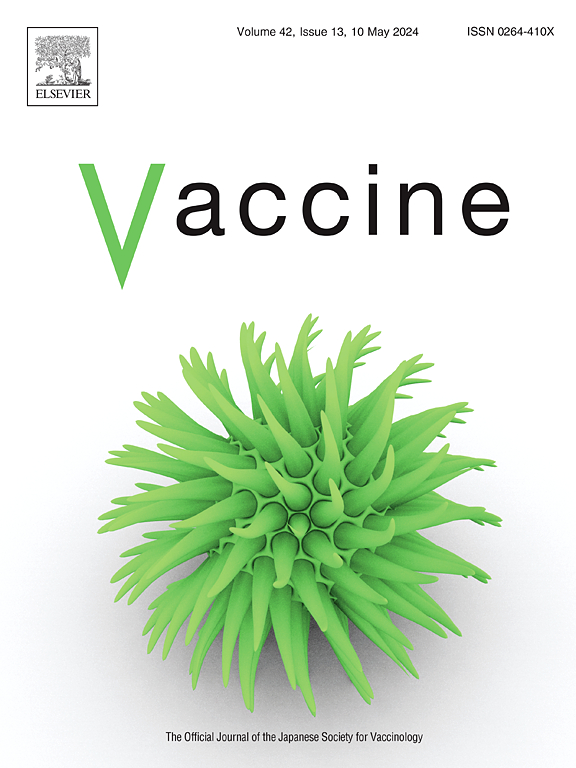Distribution of pneumococcal serotypes causing invasive and non-invasive diseases in children in Mexico after introduction of PCV13 (2012−2023). Results from the GIVEBPVac group
IF 4.5
3区 医学
Q2 IMMUNOLOGY
引用次数: 0
Abstract
Background
The introduction of pneumococcal conjugate vaccines (PCVs) since 2000 has altered the epidemiology of invasive (IPD) and non-invasive pneumococcal diseases (NIPD). This study aims to analyze trends in pneumococcal serotype distribution among children in Mexico, focusing on the period following the introduction of PCV13, and assess the potential impact of future vaccines.
Material and methods
Pneumococcal isolates were collected from hospitalized children in participating hospitals from January 2012 to December 2023. Serotype distribution was analyzed in children under <5 years and those aged ≥5 to 17.9 years. The average annual change (AAC) in serotype proportions was calculated, and trends were analyzed using the Cochran-Armitage test.
Results
Serotype 19A was the most frequent PCV13 serotype, followed by serotypes 3 and 19F, in both age groups. Serotype 33F, included in PCV15 and PCV20, was absent in children aged ≥5‐17.9 years. Among PCV20 serotypes, serotype 15B was the most common, and serotype 17F, covered by PCV24, showed a significant increase in the older age group (p = 0.037). No significant trends in the increase or decrease of individual serotypes were found, except for serotypes 17F and serotype 34, which increased in both age groups. A decrease in serotypes covered by PCV13 (excluding serotypes 3, 19A, and 19F) was observed in both age groups (p = 0.04, 0.002). A significant increase in non-PCV13 serotypes occurred in children aged ≥5‐17.9 years (p = 0.023).
Conclusions
After a decade of the introduction of PCV13 in Mexico, 10 of the 13 vaccine serotypes have not been detected in the past six years. However, serotypes 3, 19A, and 19F persist at high frequencies as causes of IPD and NIPD in children. Ongoing robust surveillance is critical for identifying emerging pneumococcal serotypes, selecting appropriate vaccines for each country, and developing next-generation vaccine formulations.
求助全文
约1分钟内获得全文
求助全文
来源期刊

Vaccine
医学-免疫学
CiteScore
8.70
自引率
5.50%
发文量
992
审稿时长
131 days
期刊介绍:
Vaccine is unique in publishing the highest quality science across all disciplines relevant to the field of vaccinology - all original article submissions across basic and clinical research, vaccine manufacturing, history, public policy, behavioral science and ethics, social sciences, safety, and many other related areas are welcomed. The submission categories as given in the Guide for Authors indicate where we receive the most papers. Papers outside these major areas are also welcome and authors are encouraged to contact us with specific questions.
 求助内容:
求助内容: 应助结果提醒方式:
应助结果提醒方式:


